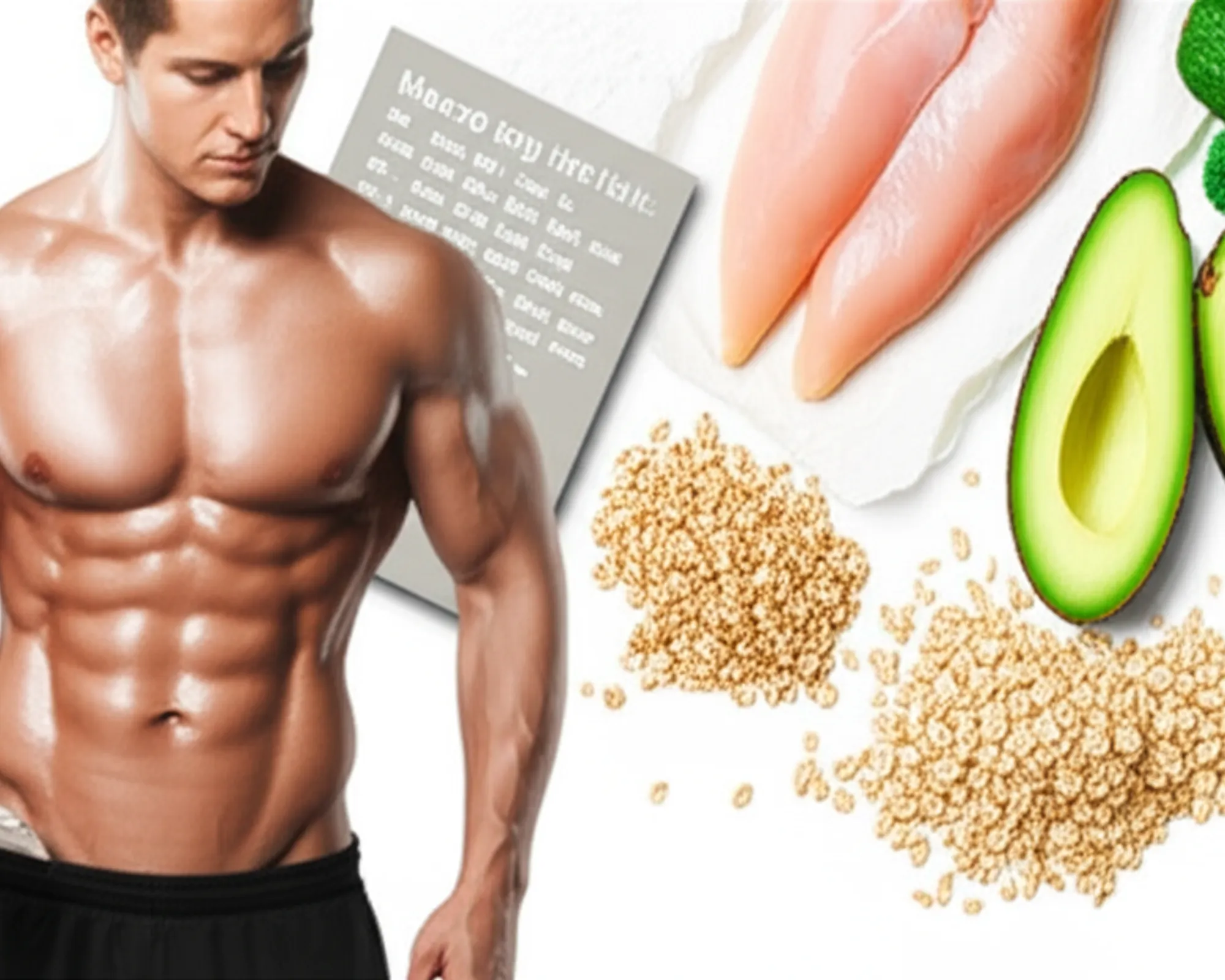How to Grow Calves Effectively at the Gym

For many gym-goers, the quest for impressive, well-developed calves can feel like an endless battle. Often dubbed a "stubborn" muscle group, calves can be notoriously difficult to grow, leading to frustration and, sometimes, abandonment of dedicated calf training altogether. But what if you could unlock the secrets to effective calf development and finally see the growth you've been working for? It's not just about genetics; it's about understanding the anatomy, applying the right principles, and executing specific exercises with precision. This comprehensive guide will walk you through everything you need to know to build a set of calves that stand out.
Understanding Your Calf Anatomy
Before diving into exercises, it's crucial to understand the two primary muscles that make up your calves:
- Gastrocnemius: This is the larger, more visible calf muscle, giving the calf its characteristic diamond shape. It's a fast-twitch dominant muscle, meaning it responds well to heavier loads and explosive movements. The gastrocnemius is primarily activated when your knee is straight.
- Soleus: Located beneath the gastrocnauemius, the soleus is a flatter, wider muscle. It's a slow-twitch dominant muscle, meaning it responds better to higher repetitions and sustained tension. The soleus is primarily activated when your knee is bent.
Recognizing the distinct roles of these two muscles is the cornerstone of effective calf training. To achieve complete development, you need to target both.
Why Are Calves So Stubborn?
Several factors contribute to the challenge of growing calves:
- Genetics: While not the sole factor, genetics play a role in muscle belly length and insertion points, which can influence potential size.
- Everyday Use: Your calves are constantly working as you walk, run, and move throughout the day. This makes them highly endurance-adapted, meaning they often require a different stimulus than other muscles to grow.
- Limited Range of Motion: Many people perform calf exercises with a limited range of motion, failing to fully stretch and contract the muscle.
Core Principles for Effective Calf Growth
Forget the old adage that calves can't grow. With the right approach, they absolutely can. Here are the fundamental principles:
1. Master the Full Range of Motion (ROM)
This is arguably the most critical factor. For every calf exercise, ensure you achieve a deep stretch at the bottom of the movement and a powerful, peak contraction at the top. This maximizes muscle fiber recruitment and time under tension. Think about lowering your heels as far as possible to feel a stretch, then rising onto your toes as high as you can to squeeze.
2. Embrace the Mind-Muscle Connection
Don't just go through the motions. Focus intently on feeling your calf muscles work. Squeeze them hard at the top of each rep and control the stretch on the way down. This heightened awareness ensures your calves, not momentum or other muscles, are doing the work.
3. Implement Progressive Overload
Like any other muscle, calves need to be progressively challenged to grow. This means gradually increasing the weight, reps, sets, or time under tension over time. Don't be afraid to lift heavy for the gastrocnemius, or increase reps for the soleus.
4. Prioritize Consistency and Frequency
Because calves are used to constant work, they can often recover faster than larger muscle groups. Training them 2-3 times per week can be more effective than just once. Consistency over months and years is key.
5. Be Patient
Calf growth is a marathon, not a sprint. Don't get discouraged if results aren't immediate. Stick to your plan, and over time, you will see improvements.
Top Exercises for Complete Calf Development
To effectively target both the gastrocnemius and soleus, incorporate a variety of exercises:
1. Standing Calf Raises (Targets Gastrocnemius)
Whether using a dedicated machine, dumbbells, or a barbell, standing calf raises are your primary tool for hitting the gastrocnemius.
- Execution: Stand with the balls of your feet on a raised platform (like a step or block) with your heels hanging off. Keep your legs straight or with a slight bend in the knee. Lower your heels as far as possible to get a deep stretch, then powerfully raise yourself onto the balls of your feet, pushing up as high as you can. Hold the peak contraction for a second or two before slowly lowering.
- Rep Range: 8-15 reps, focusing on heavy but controlled movements.
2. Seated Calf Raises (Targets Soleus)
This exercise is essential for soleus development, as bending the knee deactivates the gastrocnemius.
- Execution: Sit on a seated calf raise machine with your knees bent at a 90-degree angle and the balls of your feet on the platform. Lower your heels to feel a deep stretch, then press up using your soleus, raising your heels as high as possible. Hold the contraction.
- Rep Range: 15-25+ reps, focusing on higher volume and time under tension due to the soleus's endurance nature.
3. Calf Press on Leg Press Machine (Targets Both)
This is an excellent compound exercise that allows for heavy loading and can target both calf muscles depending on foot position and knee bend.
- Execution: Sit on a leg press machine with your feet shoulder-width apart, only the balls of your feet on the platform. Unlock the safety. Keeping your legs straight (or slightly bent), push the platform away by extending your ankles as far as possible. Control the negative back down for a deep stretch.
- Rep Range: 10-20 reps, focusing on controlled movement.
4. Donkey Calf Raises (Targets Gastrocnemius with deep stretch)
If your gym has a donkey calf raise machine, use it! Otherwise, a partner can sit on your lower back while you perform standing calf raises. This angle provides an incredible stretch on the gastrocnemius.
- Execution: With a partner or on the machine, bend at the hips to about 90 degrees, keeping your back straight. Perform calf raises as described for standing variations, focusing on the deep stretch at the bottom.
- Rep Range: 10-20 reps.
Optimizing Your Calf Training Program
Beyond exercises, consider these variables:
- Rep Tempo: Slow down! A tempo of 2-0-2-1 (2 seconds eccentric, 0 pause at bottom, 2 seconds concentric, 1-second squeeze at top) can significantly increase time under tension and muscle activation.
- Frequency: Train calves 2-3 times per week. Give them a day of rest in between sessions.
- Volume: Aim for 3-5 sets per exercise. Adjust total sets based on frequency and recovery.
- Warm-up & Stretching: Always warm up with light cardio and dynamic stretches before calf work. After your workout, incorporate static calf stretches to improve flexibility and aid recovery.
Common Mistakes to Avoid
- Half-Reps: The biggest sin. No full stretch, no full contraction means no full growth.
- Bouncing: Using momentum turns the exercise into a jump, negating muscle work.
- Too Much Weight: Sacrificing form for ego. Lighten the load if you can't control the movement.
- Neglecting the Soleus: Only doing standing variations will lead to incomplete development.
- Inconsistency: Sporadic training yields sporadic results.
Nutrition and Recovery
Like any muscle group, calves need proper nutrition and recovery to grow. Ensure you're consuming enough protein (around 1.6-2.2g per kg of body weight), maintaining a slight caloric surplus for muscle growth, and getting adequate sleep (7-9 hours). Hydration is also crucial for performance and recovery.
Conclusion
Growing your calves effectively at the gym is not an impossible feat. It requires a strategic approach, combining a deep understanding of their anatomy with consistent application of key training principles. By prioritizing full range of motion, embracing the mind-muscle connection, ensuring progressive overload, and incorporating a variety of exercises that target both the gastrocnemius and soleus, you can transform your "stubborn" calves into powerful, well-defined assets. Be patient, stay consistent, and watch your calf development finally take off!


